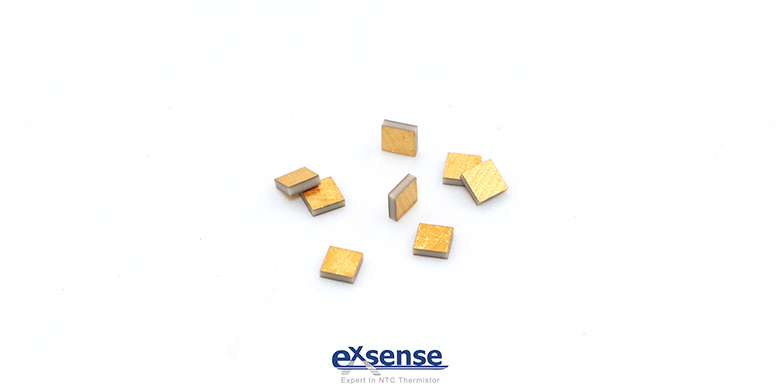
In this era of electronic products, because of the small size of chip capacitor, it’s widely used in small electronic products. Multi-Layer Chip Capacitor (MLCC), which is mostly made up of copper (Cu) bottom layer, nickel (Ni) plate layer, tin (Sn) plate layer. From the structure of ceramic chip capacitor, it can be seen that the characteristics of ceramic materials, that is, dielectric constants, particle structure, ceramic layer fineness, is the key factor of the whole capacitor. At the same time, the difference of manufacturer's design, will also affect the overall reliability. For example, the design of the internal electrode, the size of the area, etc. will also have an impact. Today, let’s introduce the production process of chip capacitor briefly:
1. Ingredient: ceramic powder, adhesive and solvent are mixed in a certain proportion, with a ball milling machine according to a certain time for ball grinding, to obtain ceramic materials (the diameter of ceramic material up to micron level);
2. Slurry mixing: the ceramic material is mixed into ceramic paste by adding relevant additives;
3. Tape casting: the ceramic slurry is passed through the pouring hole of the casting machine to form a uniform slurry layer on the winding film to ensure its surface is smooth; After drying (volatilizing most of the solvent in the slurry), ceramic film can be obtained, the thickness of the film is generally 10um~30um.
4. Printing: According to the process requirements, the electrode material is printed on the ceramic membrane through the screen printing plate;
5. Stacking: According to the design of the dislocation requirements, the printed ceramic diaphragm with electrodes, laminate together, so that it forms a bar block of chip capacitive;
6. Cover: Produce the upper and lower protective plate of chip capacitor to increase the mechanical strength and improve the insulation performance;
7. Lamination: laminated bar block is packed with laminated bag, after vacuumed, with the way of isostatic pressing so that the layer and layer in the bar more closely;
8. Cutting: the laminated bar block is cut into a separate semi-finished product of chip capacitor;
9. Glue discharging: the semi-finished product of chip capacitor is placed in the oven, baking according to a certain temperature curve (the highest temperature is generally around 400℃), in order to remove the chip adhesive and other organic matter;
The effect of glue discharging:
1) Exclude the adhesive organic material in the chip in order to avoid the rapid volatilization of the organic material when burned into the product layering and cracking, in order to ensure the burning of the desired shape of the intact porcelain parts;
2) Eliminate the reduced effect of the adhesive during burning;
10. Sintering: The semi-finished product of chip capacitor after glue discharging is treated at high temperature, the sintering temperature is 1140~1340℃, the ceramic powder is burned into ceramic materials to form ceramic particles; This process makes it a ceramic body with high mechanical strength and excellent electrical properties;
11. Chamfer: The ceramic chip capacitor is put into the chamfering tank with water and grinding medium, it moves through ball grinding method, planetary grinding method, etc. to form a smooth surface, so as to ensure the full exposure of the internal electrode and the connection between the internal electrode and external electrode;
12. Termination: The end paste is coated on both ends of the exposed internal electrode of the chip capacitor after chamfering, and the internal electrode on the same side is connected to form the external electrode;
13. End sintering: After sealing the end of the chip capacitor ceramic particles,put them into a high temperature furnace to sintering, make it contact the electrode plate carefully, forming ceramic chip capacitor body; After the end connection, the chip capacitor can be sintered at low temperature to ensure the connection of internal and external electrodes, and make the end head have a certain bonding strength with the porcelain body;
14. End head display: Surface treatment process is an electro-deposition process, which refers to the metal ions (or complexing ions) in electrolyte under direct current action, reduction to metal (or alloy) on the surface of the cathode; The capacitor is usually plated a layer of nickel, then a layer of tin on the end head (Ag end or Cu end);
15. Appearance selection: Select products with surface defects by using a magnifying glass or microscope;
16. Test: The electronic performance of chip capacitors to select: capacity, loss, insulation, resistance, pressure-resistant, the defective products rejected;
17. Packaging: Pack the chip capacitor according to customer's packing requirement.
Every detail in the production of chip capacitor is the key that can’t be ignored. Any detail must be strictly in accordance with the production process, to ensure that every detail can be accurate, in order to ensure the quality of chip capacitor. The chip capacitor produced bu EXSENSE Electronics Technology Co.,Ltd. , with the characteristic of unique structure, good performance consistency, large electrical capacity, which id suitable for small, microwave occasions.



